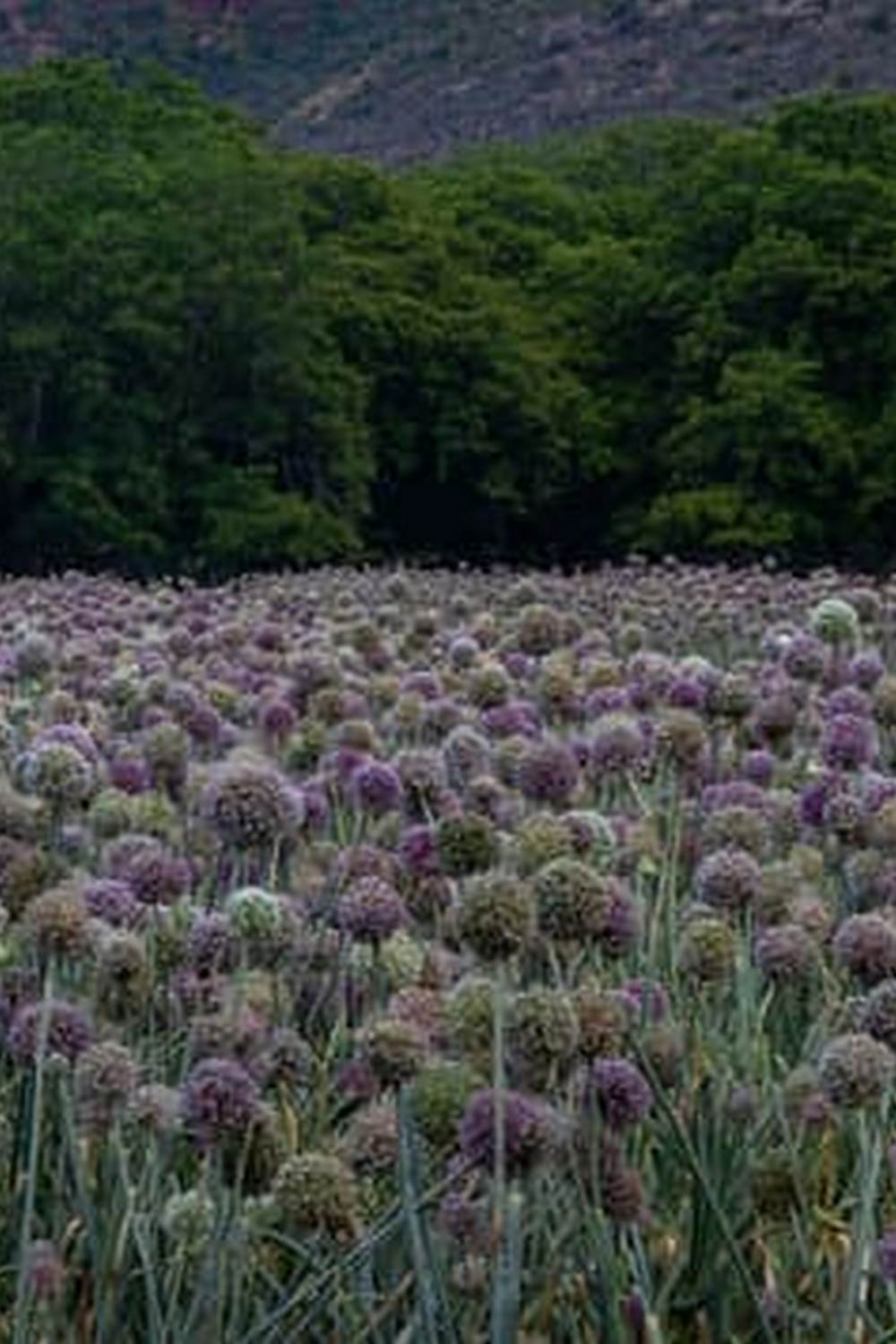Are you considering building a raised bed for your vegetable garden? If so, it’s important to consider the type of wood you use, as some types can contain harmful chemicals that can leach into your soil and affect the safety of your crops. In this article, we will explore the significance of using safe wood for vegetable gardens to ensure the health and well-being of your plants and yourself.
When it comes to selecting the right type of wood for your vegetable garden, there are certain varieties that should be avoided due to their toxic or harmful nature. Understanding which types of wood to steer clear from will help you make an informed decision when constructing your garden beds.
Fortunately, there are many safe and non-toxic options available when it comes to choosing the best type of wood for your vegetable garden. From cedar to pine to redwood, each type has its own unique benefits and considerations. In the following sections, we will delve into these safe alternatives in detail, helping you make the best choice for your specific gardening needs and preferences.
Types of Wood to Avoid in Vegetable Gardens
When it comes to creating a vegetable garden, the type of wood you use is crucial in ensuring the safety and health of your plants. Certain types of wood can leach toxic chemicals into the soil, posing a risk to both the plants and anyone consuming the fruits and vegetables grown in that soil. It is important to be aware of the types of wood to avoid in vegetable gardens in order to prevent any harmful effects.
Pressure-Treated Wood
One of the most common types of wood to avoid in vegetable gardens is pressure-treated wood. This type of wood is treated with chemical preservatives such as chromated copper arsenate (CCA) or creosote, which can leach toxic chemicals into the soil. These chemicals can then be absorbed by the plants, leading to potential health risks when consumed.
Black Locust
Another type of wood to avoid in vegetable gardens is black locust. While it is known for its durability and resistance to decay, black locust contains toxins that can negatively impact plant growth and health. Using black locust in vegetable gardens can lead to stunted growth and poor fruit production.
Redwood Treated With Fire Retardants
It’s also important to avoid using redwood that has been treated with fire retardants in vegetable gardens. While redwood itself is considered safe for vegetable gardens, the treatment with fire retardants introduces toxic chemicals that can contaminate the soil and affect plant growth. When choosing wood for your vegetable garden, it’s essential to steer clear of these types of toxic and harmful options and opt for safe alternatives instead.
The Best Types of Wood for Vegetable Gardens
When it comes to building raised beds for vegetable gardens, choosing the right type of wood is essential for the health and safety of your plants and the environment. Using safe and non-toxic wood in your vegetable garden ensures that harmful chemicals and toxins are not leached into the soil, which can be absorbed by the plants. This section will discuss the best types of wood for vegetable gardens, focusing on options that are safe and non-toxic.
One of the top choices for safe wood in vegetable gardens is cedar. Cedar contains natural oils that act as a deterrent to pests, making it an ideal choice for organic gardening. In addition, cedar is naturally resistant to rot and decay, ensuring that your raised beds will last for many years without the need for chemical treatments.
Another safe and non-toxic wood option for vegetable gardens is pine. Pine is a budget-friendly choice that is readily available in most areas. It’s important to use untreated pine lumber to avoid any chemicals or preservatives leaching into the soil. With proper maintenance and occasional resealing, pine can provide a safe and durable alternative to other types of wood.
Redwood is another excellent choice for safe wood in vegetable gardens. It’s both durable and naturally resistant to decay, making it a long-lasting option for raised beds. While redwood may be more expensive than other types of wood, its longevity and safety make it a worthwhile investment for your garden.
| Wood Type | Benefits |
|---|---|
| Cedar | Natural pest deterrent, resistant to rot |
| Pine | Budget-friendly, untreated option |
| Redwood | Durable, naturally resistant to decay |
Cedar Wood
When it comes to building a vegetable garden, choosing the right type of wood is crucial for the health and safety of your plants and, ultimately, yourself. Cedar wood is widely regarded as the top choice for safe vegetable gardens due to its natural resistance to rot, decay, and insect infestation. Here are some reasons why cedar wood is the best option for constructing a vegetable garden:
1. Natural Resistance: Cedar wood contains natural oils that act as preservatives, making it resistant to decay and insect damage without the need for chemical treatments.
2. Longevity: Cedar wood has a long lifespan, which means you won’t have to worry about replacing it frequently, saving you time and money in the long run.
3. Safety: Unlike chemically treated woods or woods with toxic elements, cedar is completely safe for growing vegetables and other edible plants.
In addition to these benefits, using cedar wood in your vegetable garden can also add a touch of natural beauty to your outdoor space. Its warm coloring and distinct aroma can enhance the overall appeal of your garden while providing a safe and healthy environment for your plants to thrive. By choosing cedar wood for your vegetable garden, you can ensure that your gardening efforts are not only fruitful but also environmentally friendly and sustainable.
Pine Wood
Pine wood is a popular and budget-friendly option for vegetable gardens due to its availability and affordability. However, when using pine wood in vegetable gardens, it is important to ensure that the wood is safe and non-toxic for the plants and the soil.
One of the main concerns with using pine wood in vegetable gardens is the natural preservatives present in the wood, such as phenols. These compounds can leach into the soil and potentially affect plant growth. However, using kiln-dried or heat-treated pine wood can help reduce these risks and make it safer for use in vegetable gardens.
It’s important to note that not all types of pine are suitable for vegetable gardens. Treated or stained pine should be avoided, as they may contain harmful chemicals that can seep into the soil. Instead, opt for untreated, natural pine wood that has been properly dried and cured to minimize any potential negative effects on your vegetables.
| Type of Wood | Suitability for Vegetable Gardens |
|---|---|
| Cedar Wood | Top choice due to its natural resistance to rot and insects |
| Pine Wood | Budget-friendly option; must be untreated and properly dried |
| Redwood | Durable option with natural resistance to decay; safe for long-lasting vegetable gardens |
Redwood
When it comes to choosing the right type of wood for your vegetable garden, redwood stands out as a durable and safe option that can contribute to the longevity of your garden. Redwood is known for its resistance to rot and decay, making it an excellent choice for outdoor use, including in vegetable gardens. This section will explore the benefits of using redwood in your garden, as well as provide tips for incorporating this type of wood effectively.
Benefits of Redwood in Vegetable Gardens
Redwood is naturally resistant to rot and decay due to its high levels of tannin, which makes it an ideal choice for use in vegetable gardens. This resistance means that redwood can withstand exposure to moisture and soil while maintaining its structural integrity. Additionally, redwood contains natural oils that act as a deterrent to pests, further adding to its appeal as a safe wood for vegetable gardens.
Tips for Incorporating Redwood in Your Vegetable Garden
When using redwood in your vegetable garden, it’s important to consider how the wood will be exposed to moisture and soil. To maximize the longevity of redwood structures, such as raised beds or trellises, consider applying a non-toxic sealant or treatment specifically designed for outdoor use.
This will help protect the wood from prolonged exposure to moisture and other environmental factors. Regular maintenance, such as cleaning and resealing when necessary, can also help prolong the life of redwood structures in your vegetable garden.
Considerations for Using Redwood With Edible Plants
While redwood is generally considered safe for use in vegetable gardens, some individuals may have concerns about its potential impact on edible plants. To address these concerns, it’s recommended to line the interior of redwood planters or raised beds with a barrier such as a food-grade plastic liner before adding soil and planting crops.
This extra layer provides added assurance that any potential compounds within the wood are not absorbed by the plants’ roots. By taking these precautions, you can ensure that your redwood-based vegetable garden remains a healthy and safe environment for growing produce.
Tips for Using Safe Wood in Vegetable Gardens
When it comes to using safe wood in vegetable gardens, there are several important considerations to keep in mind. Not only is the type of wood important, but so is how you prep, treat, and maintain it. Here are some valuable tips for ensuring that the wood in your vegetable garden is safe and non-toxic:
Prepping the Wood
Before you use any wood in your vegetable garden, it’s crucial to properly prep it to ensure its safety. This includes removing any existing finish or treatment that could be harmful to your plants and soil. Make sure to sand down the wood to remove any rough spots or splinters before incorporating it into your garden.
Treating the Wood
To further protect your vegetable garden from potentially harmful substances, consider treating the wood with a non-toxic sealant or stain. Look for products that are specifically made for use in organic gardening and are free from harmful chemicals. Treating the wood can help extend its lifespan and prevent any leaching of toxins into your garden over time.
Maintaining the Wood
Regular maintenance of the wood in your vegetable garden is essential for keeping it safe and healthy. This includes periodically checking for signs of wear and tear, as well as reapplying protective treatments as needed. Additionally, be mindful of any potential pest infestations or moisture issues that could compromise the safety of your wood. By staying on top of maintenance, you can ensure that your vegetable garden remains a safe and thriving environment for your plants.
By following these tips for prepping, treating, and maintaining safe wood in your vegetable garden, you can create a healthy and sustainable growing space for all your favorite veggies. Remember that choosing the right type of wood is just the first step – proper care and maintenance are equally important in ensuring a safe environment for your plants to thrive.
Conclusion
In conclusion, choosing the right type of wood is crucial for creating a healthy and safe vegetable garden. By understanding the potential risks associated with certain types of wood, gardeners can make informed decisions to protect their plants and themselves. Avoiding toxic and harmful woods, such as pressure-treated lumber and chemically treated wood, ensures that vegetables grown in the garden are safe for consumption.
Cedar wood stands out as the top choice for safe vegetable gardens due to its natural resistance to rot, decay, and insects. Its non-toxic properties make it an ideal option for raised beds or planters. Additionally, pine wood provides a budget-friendly alternative that is also safe for growing vegetables. Redwood is another durable and long-lasting choice that offers both safety and aesthetic appeal for vegetable gardens.
It is essential to properly prep, treat, and maintain the chosen wood to ensure its continued safety in the vegetable garden. This may involve applying a natural sealant or preservative to extend the life of the wood and protect it from moisture and fungal growth. By following these tips and selecting safe wood for vegetable gardens, gardeners can create an environment that promotes healthy plant growth, free from any potential harm caused by toxic materials.
Frequently Asked Questions
What Type of Wood Is Safe for Vegetable Garden?
When choosing wood for a vegetable garden, it’s important to select a type that is safe and non-toxic for growing edibles. Cedar and redwood are popular choices due to their natural resistance to rot and insects.
Is It OK to Use Pressure Treated Wood in a Vegetable Garden?
Using pressure treated wood in a vegetable garden is generally not recommended. It contains chemicals like arsenic that can leach into the soil, posing a potential health risk to those consuming the vegetables grown in it.
What Kind of Wood Do You Use for Raised Vegetable Beds?
For raised vegetable beds, untreated lumber such as cedar or redwood is commonly used. These types of wood are durable and naturally resistant to decay, providing a safe and long-lasting option for growing vegetables.

If you’re looking to get into vegetable gardening, or are just looking for some tips on how to make your current garden better, then you’ve come to the right place! My name is Ethel and I have been gardening for years. In this blog, I’m going to share with you some of my best tips on how to create a successful vegetable garden.





